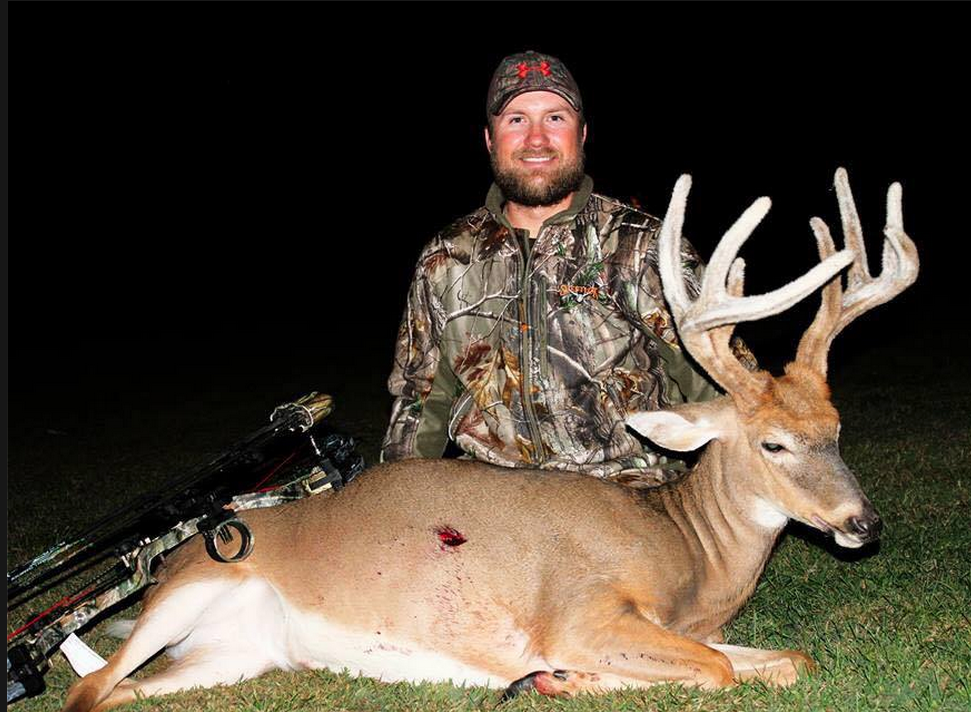Despite sound scientific research on the topic that’s been around for more than 25 years, the general deer hunting public is still confused about deer that — from outward signs — appear to be “antlered does.” Deer & Deer Hunting has been the leader in information on this subject for decades, and — more specifically — our Research Editor John J. Ozoga has written numerous articles on the subject.

Long story short: If it has branched antlers like a buck or hardened antlers, chances are very slim that it is truly an antlered doe. In most cases, whitetails with outward signs of female reproductive organs and hardened antlers fall into one of several class of hermaphrodism. More on that later. But if you see a photo floating around on social media with claims of a record-size rack belonging to an “antlered doe,” your immediate reaction should be: No, it’s probably not.
Let me explain.
Back in the 1990s, Ozoga, the esteemed deer research biologist from Michigan’s U.P. compiled the most comprehensive scientific literature on the phenomenon of antlers does. We published his work in Deer & Deer Hunting Magazine under the headline: “The Mystery of Antlered Does.” Here are the short takes from this exhaustive bit of research work:
- To accurately judge the reproductive status of a white-tailed deer presumed to be an antlered doe, it’s necessary to examine its reproductive tract. The mere presence of external female organs doesn’t necessarily mean the animal is a true female. Even then, it might be difficult to determine the type of intersexuality. In most of these presumed cases, the uterus, tubes or ovaries were missing or deformed.
- A small percentage of individuals are cryptorchid males — a term some scientists prefer over the more accurate “pseudohermaphrodite” to describe a deer with female-type external sex organs but with undescended testes buried in body fat (something that is difficult for a layman to identify).
- The growth of pedicles and antlers depends on short-term elevations in the secretion of testosterone. Scientists know that the ovaries of rats, mice and other mammals produce limited amounts of male hormone, therefore ovarian production of male hormones might sometimes trigger antler growth. But – and herein lies the rub – these antlers are never the branch-antlered, hardened types you see in all of the photos floating around on the internet. In fact, these antlers are almost always blobs of velvet (sometimes partially hardened), and they adorn the bodies of normal-sized does.
The key takeaways to Ozoga’s published research articles is this:
Based on legendary deer researcher George Wislocki’s work, so-called antlered does fall into one of the following five groups:
- No recognizable pathology and a seemingly normal female reproductive tract (velvet-covered pedicles, small button antlers or small velvet-covered spikes with occasional branchings. Small, hard, polished antlers can occur, but are rare.
- Diseased or degenerated ovaries, usually of unknown cause (velvet blobs for headgear).
- Degenerated ovaries caused by old age (same as #3).
- True hermaphrodites, having both ovaries and testes, but possessing male or female external sex organs, or both.
- Pseudohermapphrodites (also called cryptorchid males) with abdominal (internal and usually hidden or unnoticeable) rudimentary testes and no recognizable ovaries.
The topic for another day would be the injury factor. In some cases, a doe will grow a single antler — usually deformed and usually abnormal-looking — as the result of a head injury. These can be the result of the injury and/or from a hormonal imbalance.
(Excellent video of an antlered doe in this video by Shane Simpson):
The bottom line, according to research: Is the unusual antlered specimen you bagged really an antlered doe? If it has fully hardened trophy-class antlers … the odds are high that it is not a true female, but rather part buck and part doe. In fact, if it has polished antlers at all, you should immediately suspect it’s not a true female.
In that case, it makes the deer even more special, because it is a true freak of nature.
Editor’s note: Special thanks to all of the research biologists who came before us to study these whitetails in the wild. Those researchers include: G.A. Bubenik, A.B. Bubenik, J.C. Donaldson, J.K. Dout, R.J. Goss, W.T. Hessleton, R.M. Hesselton, J.A. Chapman, G.A. Feldhamer, L.A. Ryel, C.W. Severinghaus, W.D. Wishart, G.B. Wislocki and, of course, Deer & Deer Hunting contributing research editor John J. Ozoga.








